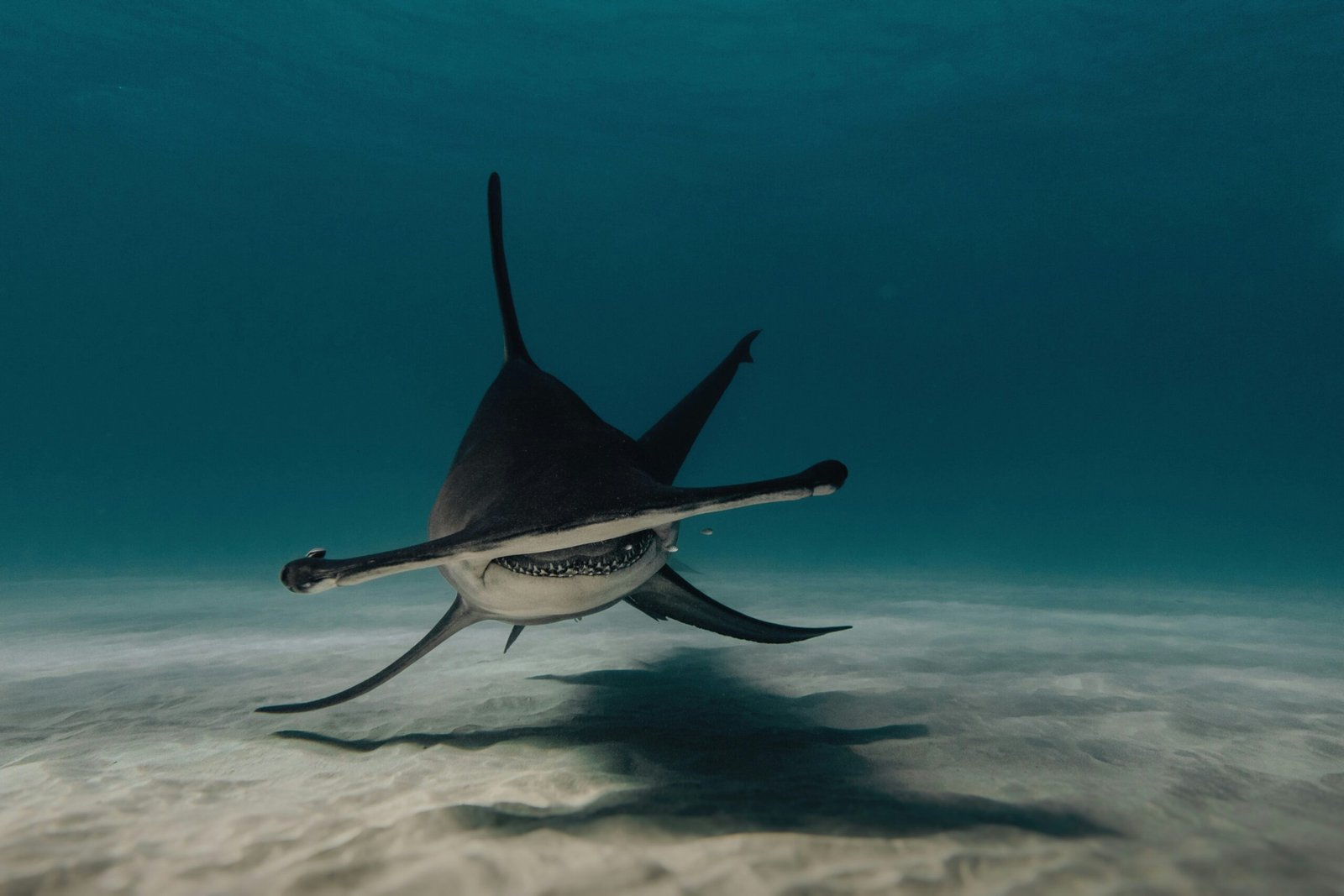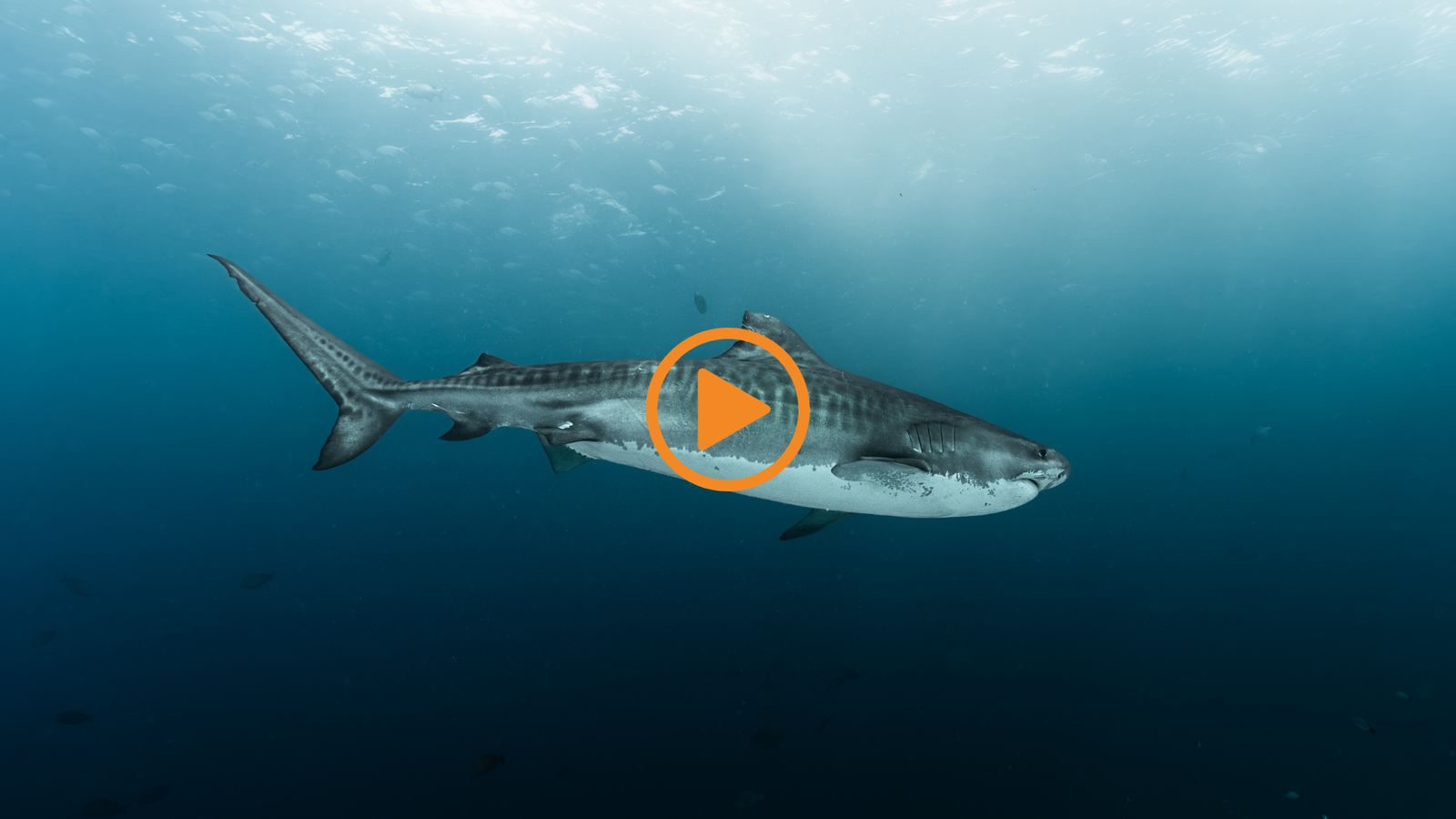blog details

- Marine Life
How Hammerhead Sharks Hunt – Nature’s Perfect Design
Few animals in the ocean capture the imagination quite like the hammerhead shark. With its wide, flat head and eyes positioned at each end, it has one of the most recognisable silhouettes in the animal kingdom. This unusual shape isn’t simply a quirk of evolution. Every part of it is built for purpose, turning the hammerhead into one of the ocean’s most skilled predators.
Built for Senses and Speed
The head, known as a cephalofoil, gives the hammerhead several advantages that other sharks simply don’t have. The positioning of the eyes allows for a much wider field of vision, enabling the shark to scan almost all around its body. Beneath the surface of the cephalofoil lies a network of tiny sensory pores called the ampullae of Lorenzini. These are capable of detecting the faintest electrical signals given off by living creatures, meaning that even if a fish or ray is hidden under sand, the hammerhead can still find it. The shape of the head also works like a steering fin, helping the shark make quick, precise turns in pursuit of prey.
Hunting with Precision
Hammerheads are calculated hunters. They patrol along coral reefs, across sandy seabeds, and through open water, combining their exceptional senses with agility and speed. Stingrays are among their favourite meals, and a buried ray is no match for a hammerhead’s detection abilities. Once it has pinpointed the ray’s exact location, the shark will sweep in and press its head down against the seabed to hold the prey in place before taking a bite. This technique is a signature hunting method and one of the reasons hammerheads are so fascinating to study.
Encounters and Conservation
For divers, seeing a hammerhead in the wild is unforgettable. They often appear curious, approaching cautiously before gliding away again. In certain parts of the world, large schools of hammerheads can be found at specific times of year, creating a breathtaking spectacle as dozens of these distinctive shapes move together through the blue. Destinations like the Bahamas, the Maldives, and Cocos Island have become iconic for such encounters, though the experience always depends on the season and local conditions. While hammerheads are not considered a threat to humans, divers should always respect their space and behaviour, observing without interfering.
Unfortunately, these sharks face serious challenges. Many species of hammerheads are now considered endangered due to overfishing, accidental capture in nets and longlines, and the destruction of their habitats. Their fins are highly valued in the shark fin trade, and their slow reproductive rate makes it difficult for populations to recover once numbers decline. Conservation measures, such as creating marine protected areas and promoting responsible shark tourism, are vital to their survival. Supporting these efforts not only helps hammerheads but also benefits the wider marine ecosystems in which they play a crucial role.
Hammerhead sharks are a powerful reminder of how evolution can produce a predator perfectly adapted to its environment. Every feature, from their extraordinary sensory abilities to their streamlined movements, serves a purpose. Learning about these animals and understanding the challenges they face is an important step in ensuring they continue to thrive in our oceans. With the right protection, future generations of divers will still have the chance to witness the unmistakable outline of a hammerhead cutting gracefully through the water.
share

Why People Love Us For Adventures?
I was looking for an affordable travel package. I came online to research thoroughly and I am lucky enough to find WiseTrips. They arranged a wonderful trip for me at an affordable price.

Zinder Whiteman
CEO, Marvely
WiseTrips is a super friendly travel agency. They provide everything you might need on the trip. I am grateful that they have made my vacation something to remember for a long.

Kelly Wiliams
Director, Martly
